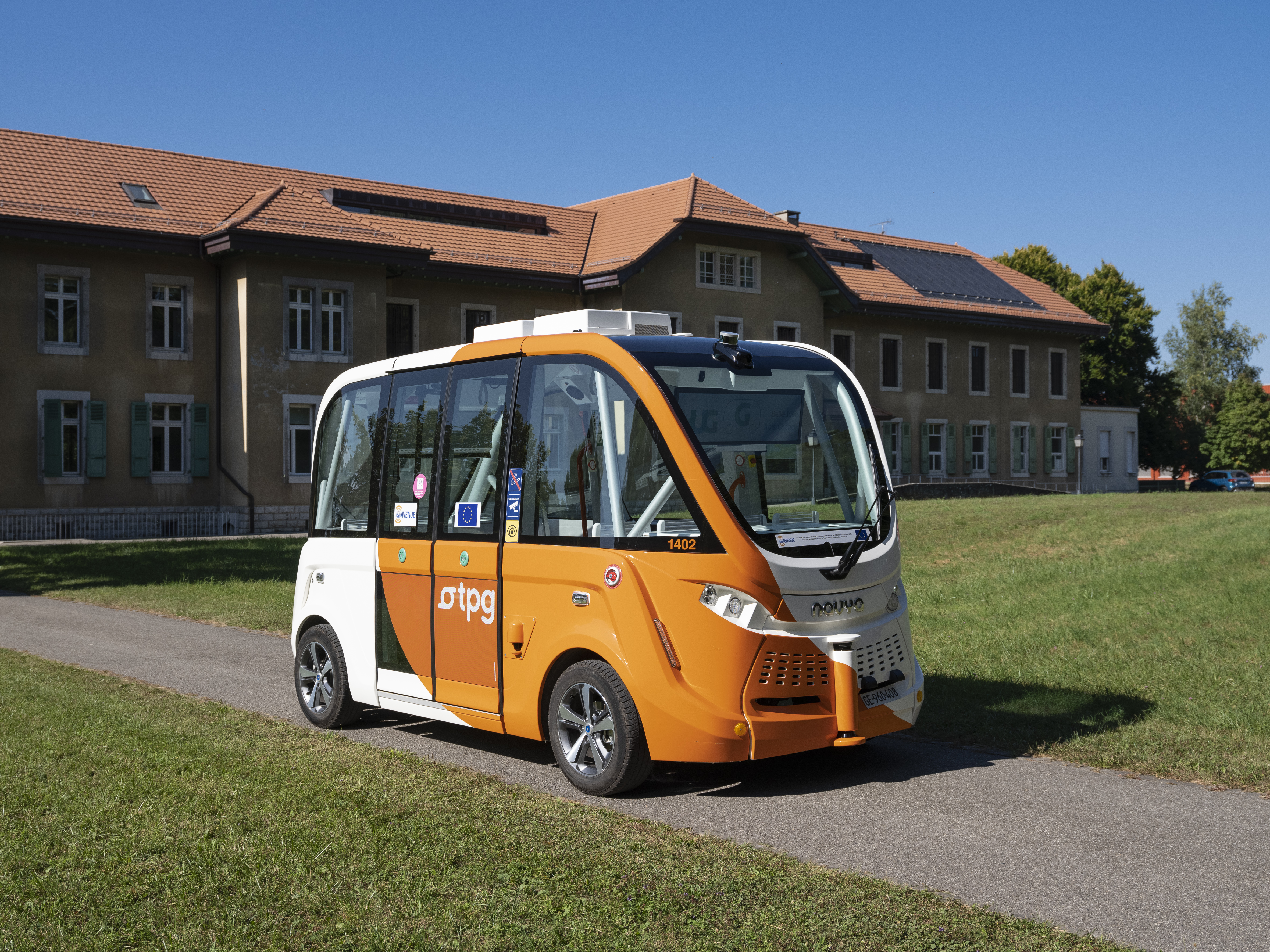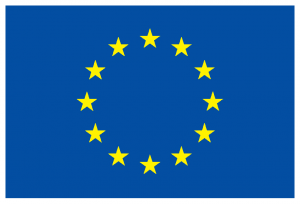One of the AVENUE project’s main objectives has been to analyze the potential economic impact of an autonomous public transit model’s implantation in order to verify its business viability; all our results confirm that it would definitely achieve a positive economic balance.
Indeed, our teams assessed AVENUE’s Automated Minibuses (AMs) economic impact and used potential key scenario parameters to test the potential cost of this technology advent. We also conducted a local context analysis to understand how to assess the local economic balance of an AM fleet before its deployment in a specific context.
We also realized a macro qualitative analysis of AVENUE services scenarios and developed a tool (EASI-AV©) to evaluate external costs at a city level (pollution, noise, accidents, urban space level) helped by our testing sites data. This tool helps policymakers, public transit operators (PTOs) or anyone wishing to implement AM services to calculate their fleet size needs, the expected total cost of ownership (internal cost and externalities), the cost per passenger and the profitability for each context.
Our teams’ findings help determine, for any given context, under which conditions an AM service will be financially beneficial, the expected profit margins and which deployment scenario to adopt.
Related to the economical impact of the AM model advent, we focused on multiple tasks:
- Identifying several Business Opportunities and the actors’ groups that can seize them, with their particular advantages or structural/technological lead and proceeding to projections of the future market landscape (+value flows between stakeholders).
- Establishing some economic assessment framework analyses including Business Scenario and externalities for stakeholders like users, PTOs, cities (with their respective behaviors).
- Identifying potential Business Strategies and found the most promising ones for the most promising Business Opportunities for each Business Scenario.
- Analysing AMs’ expected externalities for cities and for each Business Scenarios & Use Cases.
- Defining some Business Models, with analysis of ticketing strategies and new revenue models.
- Developing an automated data collection and Business Model analysis (to improve next ones) with a wider range of revenue model than before to simulate AM services economic balance.
- Defining a final strategic business planning concept for each Use Case.
- Carrying out an analysis of macro trends, and then made a trend radar analysis for the identification of vision for AMs.
Our teams’ findings and conclusions:
Economically viable model
- All our research confirm that from an economic standpoint, the Automated Minibus (AM) model is perfectly viable.
- For a specific scenario in 2040 in Geneva, total savings from replacing 18% of the current modal share of private vehicles (expected situation at this date) with AMs is around 6’455 M€.
Capital and operation expenditures / external costs savings
- The Automated Minibus (AM) advent will decrease the costs related to externalities mainly through congestion reduction.
- On our Luxembourg deployment for example, the cost per passenger and for the entire fleet is higher for AMs than for ICEVs (until safety drivers will not be needed anymore) but there is a significative reduction in the local external costs (half lower per passenger and per vehicle/km).
- Capital and operation expenditures are higher for AMs than for ICEVs, but extra revenues will compensate (advertising, data commercialization, etc.).
Very attractive Business Opportunity
Automated Minibus (AM) sector can be a very attractive Business Opportunity with long-term perspectives for AMPT solution providers (safe position, niche segments).
Public Transport increased market share
Automated Minibuses (AMs) advent will increase overall Public Transit ridership and thus its market share on the global mobility sector.
Importance of the AM model choice / Planned deployment strategy
- Replacing traditional Public Transit services without a planned strategy would drastically worsen the external costs of deploying Automated Minibuses (AMs).
- Strategic direction needs to be elaborated/pushed forward as multiple modalities, applications, platforms, services, data regulations and governance concepts are developing.
- AM economic long-term impact and profitability highly depend on the model deployed.
More conclusions based on 6 scenarios each focusing on a different modal shift caused by the AM deployment
We first settled 6 scenarios for a potential Automated Minibuses (AMs) deployment in each AVENUE demonstrator city and the resulting external costs, each focusing on a different modal shift caused by the AMs deployment. Our methodology pinpointed the pros and cons of each option showing us which one mobility should evolve towards and allowed us a whole series of findings:
- AM integration within a MaaS (Mobility-as-a-Service) environment is the most realistic, suitable and result-oriented option, offering seamless and intermodal trips, reducing externalities and having strong social acceptance. In Geneva, it may reduce external costs by 83.3 M€.
- Replacing all cars with AMs would also greatly decreases external costs.
- AMs suburban implantation should have positive financial results (helping switch to PT), particularly if they cover long distances and connect communes.
- Of all AVENUE deployments, it is in Geneva center that AMs have the highest reduction in externalities potential, mainly because of the high congestion current situation.
- If the AM advent is supported by urban policies (road pricing, no-car zones etc.) it will increase the modal shift to this technology.
- AMs need to operate without any driver to cut the costs and facilitate their adoption.
More conclusions based on 4 Business Ecosystem (BES) scenarios
We also set 4 Business Ecosystem (BES) scenarios, each projecting that a very different group of stakeholders will be at the heart of the Automated Minibus Ecosystem (PTOs, automotive sector, new mobility providers or customers/MaaS), that enabled us to assess that:
- The MaaS centered scenario is the most probable and suitable one. It provides many strengths and opportunities, but faces weaknesses (technical, organizational, conceptional) and threats to be mastered before showing its benefits. Multiple potential MaaS BES patterns have been identified and a public/private stakeholders’ combination is seen as most advantageous.
- Value-added AM services are an attractive business for future automotive centered mobility providers (digitalization / “big data” being highly profitable).
- New Mobility Providers lack some AM competencies; it can be offset by partnerships or by listening to AM specialized companies like AVENUE that can help them seize opportunities, fend off threats and ramp up fast in this market.
- Partnership collaboration among mobility innovators (strategic synergies, integrations) is needed for business success.
- Vehicle maintenance or fleet management services may be an attractive partnering offering for New innovation-based Mobility Providers.
- New Mobility Providers’ centered BES (data business, technology innovations, transaction networks) can find a manageable playing field for mastering the challenge of a BES extension by AM engagement and they can enhance the AM business.
- Data related issues and the impact of “data giants” are key success factors for the AM business.
- AM solution providers can engage in various ways in MaaS centered BES depending on their offering. They can generally apply their whole solution portfolio to the Public and Private MaaS centered Ecosystem and intensify their niche position by specialization.
More on the focused scenario ‘AV in Maas/ITS’ as a vision
- AM in MaaS can be a promising game-changer in urban mobility. The AM, deployed on-demand and door-to-door and combined with other means of transport, will provide an individualised, affordable and inclusive transport as convenient as privately-owned cars.
- Innovative coopetition governance on local, national and European level, as well as open data, open interfaces and protocols, are further key factors for fair competition (avoiding the “winner takes it all phenomenon”) and sustainable mobility.
- In addition, AVs coupled with ITS and AI (artificial intelligence) are expected to make a self-learning transport system which is more reliable, safe, efficient and flexible (concept called ambidexterity) combining incremental and disruptive innovation, and thus antinomic go As a result, AM and ITS have the potential to make the transport system citizen-centric, resilient and sustainable by enabling positive externalities and lowering negative externalities.
- The citizen-centric approach could thus become purpose centric, serving the general interest to provide the best balance for all stakeholders. First survey results show that this can be implemented just by improving the mobility offer (pull approach) with AM in MaaS or in ITS and not through dos and don’ts or push and pull policies as it is still the case to support sustainable mobility transitions.
How to achieve the ’AV in MaaS/ITS’ vision by innovation based transformation
- AM integrated into intelligent transport systems (ITS) is a complex and technologically risky innovation project that combines two types of disruptive innovations:AM as a product innovation (or even vehicle system) and MaaS / ITS as a mobility system innovation, which implies a general social, economic and environmental “ecosystem” innovation.
- On the technical side, the AM capabilities (perception and ability to determine, speed etc.), the AM environment (mapping and modification of routes, e.g.) and human involvement (for disabled access or the necessity of onboard safety driver, e.g.) can be questioned even if fast improvements are expected.
- The environmental impact will further have to face economic interests of individuals in comparison with general interest. Some users would perhaps prefer a convenient robotaxi which has more externalities than intermodal trips with AM in Maas. Private TO could further try to lock-in users in a closed ecosystem to capture more value, consolidate/cement their position on the market and create dependencies.
- The governance is thus crucial to balance these interests, even though it is possible that the creation of closed ecosystems could weaken the power of PTA and the capability of balancing of interests.
- Finally, it is, of course, expected to satisfy better the mobility needs of the citizen on the social level. However, special attention should be paid to digital illiteracy to avoid the exclusion of parts of the population through the engaged transformation process.
How to increase AM customer base and profitability
- Proposing some attractive individualized offers included in multiplatform ticket offers.
- Integrating customized mobility services (route planning, forms of payment, infotainment features, integrated customer service, etc.).
- Adding special services for people with disabilities, a follow my kids’ option, etc.
- Offering an on demand/door-to-door service.
More on the EASI-AV tool
The EASI-AV tool can calculate:
- The economic impact of Automated Minibuses (AMs) before and after implementation regarding different cost variables (staff, infrastructure, energy costs).
- The economic viability of AM as a part of an integrated PT system.
- AM introduction cost savings concerning total cost of ownership as well as externalities.
- The cost per kilometer or per passenger.
- Results at a local (designing/implementing costs) and global (macro external costs) scale.
- The number of AM needed to satisfy mobility needs and replace ICE vehicles in a particular area. In the on-demand context, complex algorithms taking into account multiple parameters (waiting/charging time, vehicle capacity, operation cities trip data, local mobility behavior, modal shares of the calculations’ desired area) are needed.
- The fleet total ownership costs (AVENUE deployments permitted to refine cost estimations).
- The local external costs of implementing an AM service (per passenger or per vehicle/km).
- The expected profit margins taking into account the given context.
For all these points it can provide a comparative approach with any other transport mode.
All our research and results are available in our public deliverables section (D8.3 , D8.4 and D8.6 for the economical aspect)



